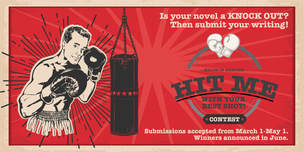by Juanita Houston

Wow, here we are again. Time for some more Show don’t Tell. Starting from where I left off last week. We are going to cover a few things like narrative summary, action/interior monologue and why showing is important. Let’s get started.
SHOW DON’T TELL – Part 2
Anywhere you have narrative summary that reveals a major plot twist, try to convert it to a scene.
This is another example of telling:
Bill was cold. He was hungry. He had been abandoned by his parents and huddled in the doorway of the downtown mission. Soon the volunteers would unlock the doors and Bill would be allowed inside. He would be warm and he would get something to eat.
This next example converts the passage into an action/interior monologue scene where we show what Bill is thinking and feeling:
Bill shivered. His stomach rumbled. How much longer did he have to wait? He peered through the mission’s grimy front window. Inside, volunteers prepped the food line, set up tables and piled blankets on cots. He blew out his breath and stamped his feet. Soon.
In the first example, we tell you that Bill his cold and hungry. In the second example, we never once write the words cold or hungry, yet you know Bill is suffering because he shivers and his stomach rumbles.
Also, in the first example, we tell you details about Bill that aren’t necessary to the story at this moment. You don’t need to know that his parents abandoned him or that once he gets inside he will be warm.
In the second example, the reader can write another showing scene, in which Bill goes inside the mission, eats, gets his cot for the night, and interacts with other characters.
Remember, action and dialogue scenes show your readers what is happening in your story. Passages of narrative summary tell your readers something you want them to know. In general, showing is better than telling.
Why is Showing Important?
1. It involves your readers in the story.
2. It quickens the pace of your story.
3. It creates sympathy for the characters.
4. It adds emotion.
I am going to stop here this week so that I don’t break up the next section, which will be about “How Do You Show and not Tell?” Hope you enjoy this segment and that it helps.
Thanks to Barbara for allowing me to use parts of her book, Painting the Paper Canvas: A Self Editing Guide. It was written in 2003 by Kenlyn Foster Spencer and Barbara Christopher. I keep mine at my desk for times when I need it. See you next week.
Juanita Houston
Secretary/Editor: Dead to Writes: A Malice in Memphis Newsletter.
SHOW DON’T TELL – Part 2
Anywhere you have narrative summary that reveals a major plot twist, try to convert it to a scene.
This is another example of telling:
Bill was cold. He was hungry. He had been abandoned by his parents and huddled in the doorway of the downtown mission. Soon the volunteers would unlock the doors and Bill would be allowed inside. He would be warm and he would get something to eat.
This next example converts the passage into an action/interior monologue scene where we show what Bill is thinking and feeling:
Bill shivered. His stomach rumbled. How much longer did he have to wait? He peered through the mission’s grimy front window. Inside, volunteers prepped the food line, set up tables and piled blankets on cots. He blew out his breath and stamped his feet. Soon.
In the first example, we tell you that Bill his cold and hungry. In the second example, we never once write the words cold or hungry, yet you know Bill is suffering because he shivers and his stomach rumbles.
Also, in the first example, we tell you details about Bill that aren’t necessary to the story at this moment. You don’t need to know that his parents abandoned him or that once he gets inside he will be warm.
In the second example, the reader can write another showing scene, in which Bill goes inside the mission, eats, gets his cot for the night, and interacts with other characters.
Remember, action and dialogue scenes show your readers what is happening in your story. Passages of narrative summary tell your readers something you want them to know. In general, showing is better than telling.
Why is Showing Important?
1. It involves your readers in the story.
2. It quickens the pace of your story.
3. It creates sympathy for the characters.
4. It adds emotion.
I am going to stop here this week so that I don’t break up the next section, which will be about “How Do You Show and not Tell?” Hope you enjoy this segment and that it helps.
Thanks to Barbara for allowing me to use parts of her book, Painting the Paper Canvas: A Self Editing Guide. It was written in 2003 by Kenlyn Foster Spencer and Barbara Christopher. I keep mine at my desk for times when I need it. See you next week.
Juanita Houston
Secretary/Editor: Dead to Writes: A Malice in Memphis Newsletter.


 RSS Feed
RSS Feed